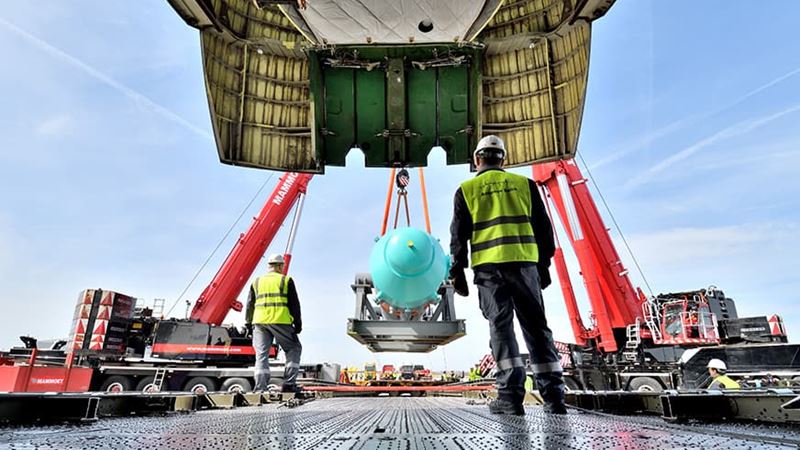
Sector:
Power Grid
Expertise:
Load-in & load-out
Heavy transport
Marine transport
Benefits:
Reduced disruption
Parallel operations
Protected infrastructure
Location:
United States
Smart solution to shallow water depths sees module delivered by barge to site.
Mammoet has once again successfully completed a complex roll-off operation for one of the largest HRSG modules to ever be transported by barge. PSEG contracted Mammoet to move the fully assembled 3152-ton module from Coeymans, New York, to the Bridgeport Harbor Station 5.
The new state-of-the-art combined-cycle gas plant is currently under construction on PSEG Power Connecticut’s existing site in Bridgeport, Connecticut. Following the project’s expected completion in 2019, the 485 MW power station will provide over 500,000 homes and businesses in southwestern Connecticut with clean, sustainable energy.
This is not the first time Mammoet has transported an HRSG module of this scale by barge and offloaded it onsite, having drawn on previous experience from a project for a different PSEG facility last year. In similar circumstances, the HRSG module was built offsite to reduce the overall construction schedule. It was then transported by barge down the Hudson River. Measuring 145’ long, 120’ high, and 39’ wide, it was moved onto the barge on 141 axle lines of SPMTs which remained underneath the unit during the journey.
However, upon arrival at the Bridgeport site, the module could not be directly offloaded from the barge due to insufficient water levels. Therefore, Mammoet proposed placing a grounding barge between the offload site and the barge carrying the module so it could sit in deeper water levels. The module’s barge was securely fastened to the grounding barge, which provided the stability to transport the module on the SPMTs over the grounding barge and onto the offload site.
Mammoet has been providing heavy lifting and transport works for the Bridgeport Harbor Station 5 since the project’s commencement. Mammoet is also transporting ACC modules and ducts to site utilizing the same barging method. In addition, up to 15 cranes ranging from 18 to 800 tons will be deployed throughout the project.




